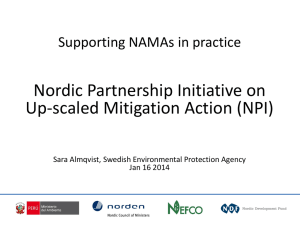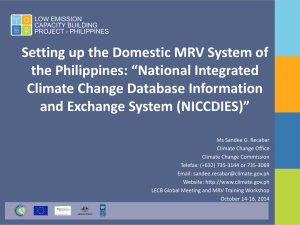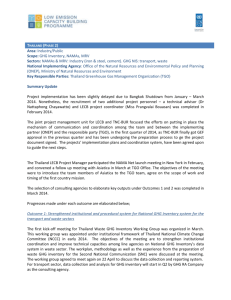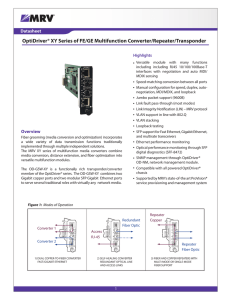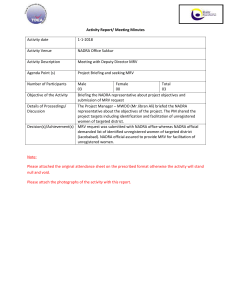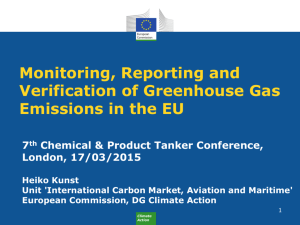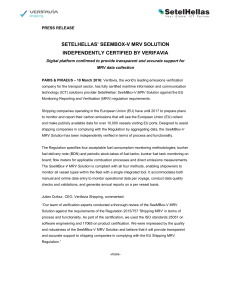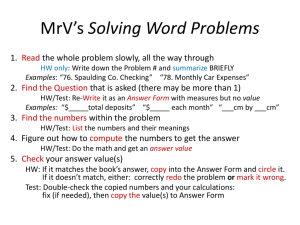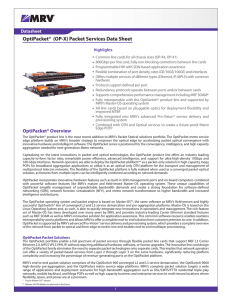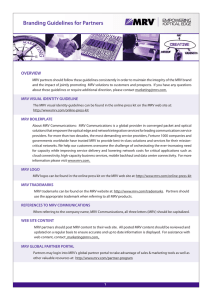National Domestic MRV system
advertisement
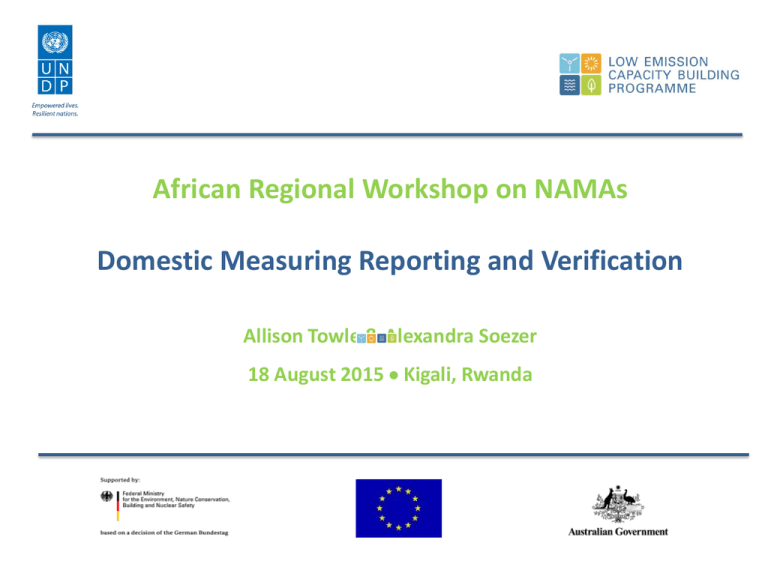
African Regional Workshop on NAMAs Domestic Measuring Reporting and Verification Allison Towle & Alexandra Soezer 18 August 2015 Kigali, Rwanda Presentation Outline Why us? Why are we in a position to speak about domestic MRV? What does the data say? What are countries doing and how can we learn from them? Lessons learned Low Emission Capacity Building (LECB) Programme (2011-16) Objective: Build capacities to design and implement low emission development through national mitigation actions in the public and/or private sectors in 25 countries Five main work areas: GHG inventory management systems Nationally Appropriate Mitigation Actions (NAMAs) Low-Emission Development Strategies (LEDS) Measurement, Reporting and Verification (MRV) Participation of selected industries in mitigation actions Donors: European Commission, Germany & Australia Measurement, Reporting, and Verification (MRV) Technical paper In 2014 a study was commissioned This paper is a result from: a questionnaire sent to all LECB countries, follow-up discussions, and in-person country visits 17 of 25 countries responded, covering all geographic regions Based on the results of these processes, four countries were selected for detailed case studies Domestic Measuring Reporting and Verification OVERALL SYSTEMS DESIGN Countries are often developing more than one level of MRV Of the countries who responded almost all were using at least one level of MRV National 11 Sectoral Project / Firm Level 65% 71% 12 10 59% A large proportion of MRV systems will not just be measuring GHG emissions GHG emissions Other 41% 59% Other factors being measured: • General co-benefits • Energy consumption • Economic indicators • Socio-economic indicators • Finance/Support MRV systems are often being designed to inform multiple international mechanisms NAMAs 16 National Communication 94% 12 71% National GHG Inventory 10 59% Biennial Update Report 10 59% Low Emission Development Strategy 53% 9 Mitigation Action Plan 7 41% Nationally Determined Contributions 5 29% Other 5 29% GOVERNANCE Most systems require input from multiple sources –inter-agency coordination is vital Managed internally 18% Other Capacity building and gaining buy-in from external agencies is critical. 82% External agency offer important technical expertise Formalizing terms of relationship is important Very few systems are supported by national legislation/regulation External legislation/regulation 24% 76% No external framework DATA COLLECTION & FUNDAMENTAL DESIGN ELEMENTS Most countries are using new and existing data New 6% 12% Existing New and existing GHG inventory – think laterally about what data you can use 82% NAMAs - existing data is an excellent resource for QA/QC & verification New data – leverage off existing A range of existing data sources are being deployed – but there are more opportunities Other agencies 12 Sectoral experts 11 National statistics bureau 65% 10 Industry groups 59% 7 Other Direct measurement 71% 5 1 6% 41% 29% Few countries have included QA/QC processes in their systems design 12% Not yet determined IPCC 6% ISO 6% Basic checks 76% IPCC 2006 Guidelines provide great resource for QA/QC techniques! A concrete example: Ghana’s Integrated Climate Data Management System Ghana’s Integrated Climate Data Management System Objectives: • Provide reliable basis for climate change planning • Serve as a framework for M&E and MRV • Integrate with the national statistics platform Key elements: IT infrastructur e and applications They keep it simple but aim at consistent improvement towards “dynamic climate data management system” in the future. Continuous data generation Climate data managemen t Documentatio n & archiving Network for sharing & clearing house Before they start they clearly define: (a) why we need documentation, (b) what to document, (c) how to document, (d) who documents, (e) where/how to store and retrieve On-line Climate Date – Three Interfaces Lessons Learned Challenges • Executive level governance frameworks are a valuable alternative to legislation/regulation • Slow pace in establishing “data sharing network”. Difficulty in data sharing • No need to reinvent the wheel.: • Data generation can be expensive. Funding is a problem. • Existing data sources are a valuable resource for both national and NAMA level MRV systems • Augmenting existing data collection process can provide a valuable means to collect new activity data • Find a way to engage others • Adopting a systems-based approach is important for effective MRV • Involvement from the private sector. Data confidentiality can be an issue for Industry and private held companies • Setting up stand-alone IT infrastructure and maintenance can be expensive. Thank you Form more information visit: www.lowemissiondevelopment.org Or write to: allison.towle@undp.org
